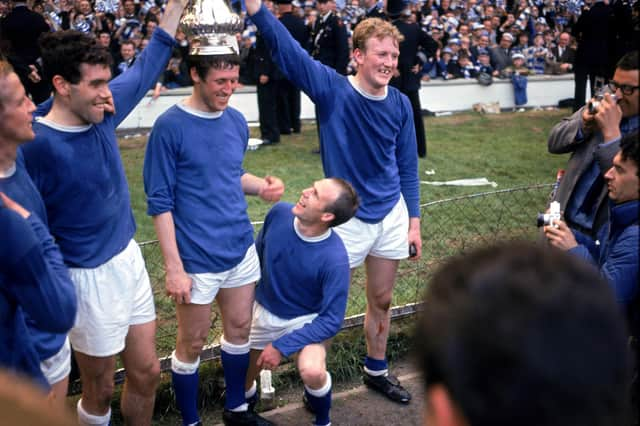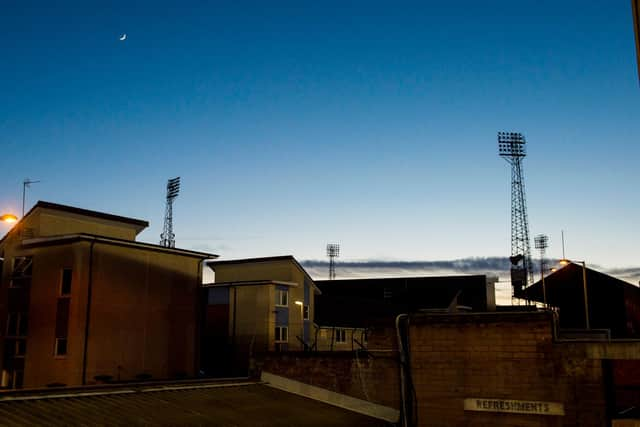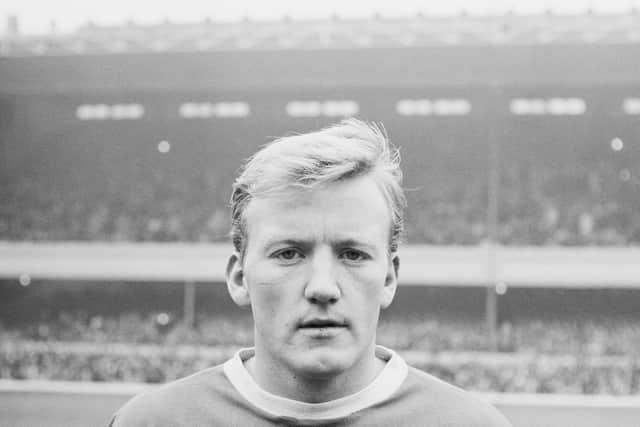The Everton legend who paid for Dundee's floodlights and then had ringside seat for Pele's last competitive game


That someone would need to be a considerable age. The story of Gabriel’s lights may have been forgotten but Jimmy Gabriel’s contribution to the football landscape in Dundee cannot be ignored even to this day. He helped shape the city skyline. He certainly left his mark on Dens Park.
The impact he made at the club he grew up supporting is reflected in the size of fee that was required to take him to Everton, who were then overtaking Spurs as the biggest spending club in the land. The near £30,000 sum the Goodison Park club paid Dundee in March 1960 was a British record for a teenager. The windfall is also reputed to have paid for the floodlights erected by Lowdon Brothers and Co electrical firm the previous year.
Advertisement
Hide AdAdvertisement
Hide AdAs if that isn’t enough, Dundee fans from the 1960s onwards have had Gabriel to thank for keeping the rain off their head as they cheered on their heroes. Some money went towards putting a roof on the South enclosure, otherwise known as the Derry. It’s Dundee’s Kop.


For someone who only played for the club 67 times between August 1958 and February 1960, all of them coming when he was still a teenager, it’s a remarkable legacy which endures to this day. They are the same floodlight pylons if not all of the same bulbs.
To give come context of the timeline, Gabriel and Alan Gilzean, the alternative G-men, crossed over briefly, playing three games together before the former headed off down south at just 19 years old to find fame and fortune. It was a road Gillie would himself take a few years and 169 goals later.
Highlighting Gabriel’s precociousness, he was a couple of years younger than Gilzean and yet he paved the way for him and others. They included the player who initially replaced him at left half, Ian Ure. “He was a regular in the side at 17 and that was unheard of then,” says Ure, who signed for Arsenal in 1963.
The Dundee floodlights are reckoned to be the tallest in Scotland. They have an additional link to the heavens following Gabriel’s death earlier this month in Phoenix at the age of 80. He earned love and affection in several other places, including Southampton and Seattle, where he was known as the original “Mr Sounder”.


As coach Gabriel took Seattle Sounders to the Soccer Bowl final in 1977 when a team including Jocky Scott lost 2-1 to Pele’s New York Cosmos in the Brazilian legend’s last competitive game. Gabriel and his wife Pat moved latterly to Arizona from Seattle to be nearer one of their three daughters, Samantha.
But it was Everton where he really found his football home, winning a league championship title in 1963 and an FA Cup in 1966. A peely-wally Scot with socks rolled down to his ankles had already taken the mickey at Wembley a full year before Jim Baxter.
One of the fondest memories of Evertonians of a certain age is Gabriel running down time by nutmegging a Sheffield Wednesday player and then taking the ball into the corner flag. He even bends down at one point as if about to pick the ball up before knocking it off a defender’s shin and out for a throw-in, which he celebrates by throwing his hands up in the air as if he’s just scored the winner himself.
Advertisement
Hide AdAdvertisement
Hide Ad“That was the first time I had seen anything like that,” says Bill Kenwright, speaking to The Scotsman last week. The Everton chairman has a particular reason to be indebted to Gabriel. “I did not have the best or easiest of childhoods,” he says. “What Everton did, it brought me a family. I used to go along on my own. It was where I felt safe. And Jimmy Gabriel was the type of lad about whom you used to say: ‘there’s my big brother, someone who would go for a brick wall for me’.”
As was the case with many clubs, Everton pinned their hopes on Scottish talent back then. Alex Young joined from Hearts shortly after Gabriel as the so-called “Mersey Millionaires” started to make use of wealthy new chairman John Moore’s funds.
Gabriel’s lights never did guide him back home. He was linked with a return to Dundee as manager in 1988 but, in the end, it was fellow Dundonian Dave Smith who got the job. At the time Gabriel was assistant manager of Bristol Rovers.
He returned to America after a spell back at Everton as a youth and reserves coach. This included two stints as caretaker manager after Colin Harvey’s sacking in 1990 and then again before Mike Walker was appointed in 1993.
“I got to know him when he came back because I was on the board,” says Kenwright. “I marvelled at him. I’d heard what a lovely man he was. They say never meet your heroes, with Jimmy I am so glad I did.
“I have a big photo of him on my wall in my office, him and Brian Harris, with the FA Cup. Maybe that was the best day of my life – football-wise. You are 2-0 down on this, my first visit to Wembley, and you come back to win 3-2 with Jimmy driving them on.
“I don’t drink but I was in the fountain that night in Trafalgar Square.” Older and wiser, and having since made his name as a theatre impresario, Kenwright is gladdened to learn that while Gabriel might have exited the stage, the lights, his lights, shine on.
A message from the Editor:Thank you for reading this article. We're more reliant on your support than ever as the shift in consumer habits brought about by Coronavirus impacts our advertisers.If you haven't already, please consider supporting our trusted, fact-checked journalism by taking out a digital subscription. https://www.scotsman.com/subscriptions
Comments
Want to join the conversation? Please or to comment on this article.